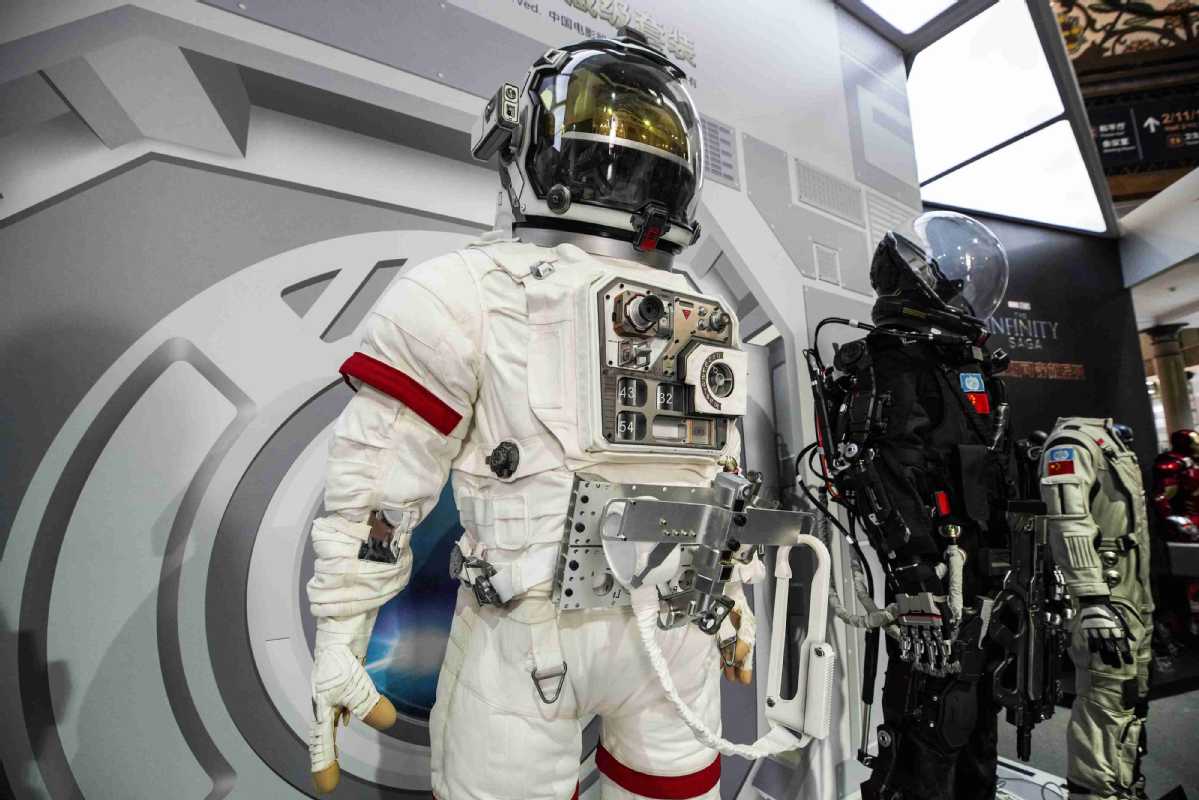Final frontier is no longer alien
By Yang Yang | China Daily | Updated: 2023-05-02 07:59

Sci-fi depictions of life in space are often inspired by what is happening on our own planet
Since its release in January, the prequel of Chinese sci-fi blockbuster The Wandering Earth (2019) has made a huge splash with takings passing 4 billion yuan ($580 million), according to box-office tracker Maoyan.
Adapted from sci-fi author Liu Cixin's novelette of the same title, The Wandering Earth tells a story about how humans build enormous engines to propel the Earth out of the solar system before the sun burns out and obliterates the planet.
The movie was released in 23 countries and regions, including the United States, Canada and Malaysia.
As one of the most complicated and demanding film genres, sci-fi, to a large extent, tests the development of the sector in a country as well as its manufacturing industries.
In The Wandering Earth II, for example, of the 950,000 prop and costume items, 61 sets of mechanized equipment were created by Xuzhou Construction Machinery Group, a leading heavy machinery manufacturer.
Among the stunning machines is the ET 120 walking excavator that in reality can work in different conditions, such as on 45-degree slopes or in 2-meter-deep water.
At the film launch ceremony, director Guo Fan said: "The 'steel mantis' (ET 120 walking excavator) that we used in the shooting is a real-life Transformer. During film-making, we saw many sci-fi scenes in the Xuzhou company."
Imagination, almost, can't catch up with the reality.
"Like all literary genres, sci-fi reflects reality," veteran Chinese scifi writer Han Song said in a previous sci-fi conference.
Chinese people were determined to make a great sci-fi movie because the country has the most complete manufacturing chain in the world, he said.
Sci-fi, the heavy industry of the film genre, displays the development of science and technology in a country, he said.
It has been evident in history that progress in science and technology will bring about the prosperity of sci-fi, say experts and insiders of the industry in China.
In recent years, fast scientific and technological advancement in the country has inspired people's curiosity to see the possibilities in sci-fi, which explains why it has become so popular in China, they say.
English writer Mary Shelley created the world's first sci-fi novel Frankenstein in the early 19th century, inspired by the discovery of bioelectricity at the end of the 18th century and related experiments.
The golden age of science fiction in the US from the 1930s to '50s or the era of sci-fi in Japan after World War II were all accompanied by fast scientific and technological development, says Ji Shaoting, head of Future Affairs Administration, a company that deals with the sci-fi business, including publication, consulting and filmmaking.
Science fiction was introduced to China at the end of the Qing Dynasty (1644-1911), together with the idea that science could enlighten people for national rejuvenation.
Han has summarized that there had been three waves of sci-fi, and the publishing of Liu's Three-Body Problem trilogy in 2010 predicted the coming of the "unprecedented "fourth wave in China due to the great economic and social development in the last few decades.
In 2021, sci-fi had become one of the major five theme categories of Chinese online literature, which is one of the main content providers of cultural industries in China, according to a report by the Chinese Academy of Social Sciences.
A white paper released in March at the Galaxy Award, the country's most prestigious sci-fi literature award, showed that last year, leading Chinese online literature platform qidian.com saw more than 42,000 sci-fi novels published, and new works increasing by 30 percent. Sci-fi ranked first place among the fastest growing themes of online literature on the website, and became the third-largest category after fantasy and urban stories.
The white paper found that more people born after 1995 have become online sci-fi writers. They tend to integrate elements, such as evolved superpower, future worlds, interstellar civilizations, and super science and technologies, in their works.
Half of the users on qidian.com started reading sci-fi in 2021, and last year, the number grew by nearly 40 percent, and 70 percent of sci-fi readers are below 30.
Like the Three-Body Problem trilogy, many popular sci-fi novels have been adapted into works of other forms, such as TV series, animation, and audio plays. An audio play adapted from online sci-fi work Yede Mingmingshu (The Art to Name the Night) was played more than 1.1 billion times.
























